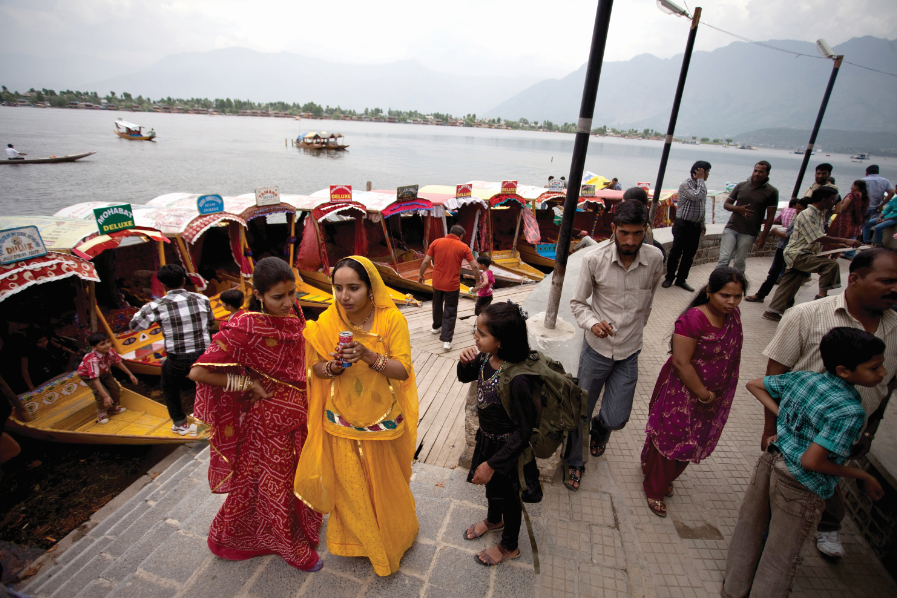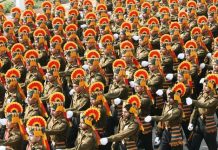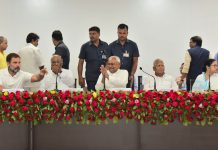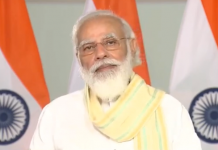
While mass protests have almost vanished in the valley, the overall sense of uncertainty among the residents hasn’t. The government will need to reach out to people and make them a part of the ongoing peace building process to make exercise look more credible. A report by Riaz Wani
“In four years, we have travelled a distance in Jammu and Kashmir that most people could not imagine. And we have framed a roadmap of the next 25 years about the changes going to happen in the union territory,” J&K Lieutenant Governor Manoj Sinha said in an interview to a national daily to make a point about the transformation underway in Kashmir after the abrogation of Article 370 on August 5, 2009.
Sinha however did not elaborate upon the roadmap and how an administration could make the one for a quarter of a century for a region when it is bound to be replaced by a successor government in a democracy.
That said, Kashmir has come a long way since the withdrawal of its special status as asserted by the LG Sinha. On the face of it, the union territory looks like any other normal place. Kashmir Valley is no longer a witness to frequent protests, stone-pelting and shutdowns. Separatist politics has all but disappeared. Tourism is booming, with over one crore tourists having visited the union territory in the last six months. Tourists are also visiting the hitherto no-go zones near the border with Pakistan.
But does this constitute normalcy? Apparently yes. But look deeper, and the situation appears contrary to its outward appearance. While mass protests may have vanished, the overall sense of uncertainty hasn’t. And if there has to be a real peace in the Valley, the government will need to reach out to people to make them a part of the ongoing process than go about doing things without their consent.
The ongoing transformation is principally driven by the suppression of separatist politics, decline in militancy and the growth in tourism.
Extinct separatist politics
It is true that the once-vaunted separatist conglomerate Hurriyat Conference has become extinct. Many of the grouping’s top leaders continue to be in jail or are under house arrest. This has hobbled its capacity to organize any political activity.
But even if the separatist leaders were free – and some of them are free – the situation would hardly be different. The government has outlawed any sign of separatist activity in whatever form and disproportionately raised the cost for any leader or an activist to go out and champion the cause.
Administrative, legal changes
There have also been far-reaching administrative and legal changes right from the domicile laws to new land laws. As a result, J&K citizenship and the buying of land have been thrown open to outsiders. The government has also overturned Roshni Act whereby occupants of state land were allowed to own it against payment determined by the government. Scores of other laws have been extended to the former state that is aiding the process of fundamentally altering the facts on the ground.
At the same time, the government has changed the electoral map of J&K by creating District Development Councils, a third tier of the grassroots democracy, whose members unlike in any other state in India are being directly elected. The DDCs are expected to not only undermine the role of the gram sabhas and the Block Development Councils – the first and second tier of Panchayati Raj respectively – but also detract from the powers of the Assembly. The 14-member DDC headed by a chairperson is largely in charge of the district. Their decisions override those of a panch, sarpanch, and a BDC member. Similarly, a future Member of Assembly despite being a member of the DDC will have no role in the election or removal of its chairperson.
Militancy is no longer a threat
In the Kashmir Valley, the number of militants, according to an estimate, has dwindled to less than 50. Ever since the withdrawal of Article 370, over 550 militants have been killed in the region, most of them local youth. But despite the reduction in the number of militants, violence has persisted, flaring up only now and then. On August 5, militants killed three security force personnel during an encounter on a hill at Kulgam in South Kashmir. Also, over the last two years, militants have targeted soft targets, such as civilians, panchayat workers, J&K police personnel visiting home, outsiders, and minorities. Security forces, as a result, now not only have to combat militancy but also protect a large section of population including many from among their own ranks.
But the resurgence in violence has not dented the larger drift of normalcy in the Union territory yet. And if the militants continue to be killed without replenishment as has largely been the case over the last four years, the militancy could very well be staring at its end.
However, the occasional spikes in militant violence in Jammu division since 2021 have confronted the security forces with a different challenge. A low-key revival of militancy in the region is seen as an attempt by Pakistan or Pakistan-based militant organizations to shift the war theatre away from Kashmir which has the highest concentration of troops. But overall militancy has remained strictly within the manageable levels. It hasn’t escalated to a point where it can be called a challenge for the security forces.
Growth in tourism
Tourism has witnessed a runaway growth in recent years. Last year saw an estimated over one crore people visit the union territory. Although, two-third of this number comprised of pilgrims, the number of holidaymakers still was the highest ever to the Valley. What is more, foreign tourists are wending their way back to the Valley. In the first six months of this year, over 15,000 foreign tourists have flocked to the Valley. The surge in international tourists is a big leap from the figures of the previous year when only 4,028 foreign visitors arrived during the same period.
Srinagar city itself has emerged as a hub for high-profile events in the country, as pointed out by the LG Sinha. The city has hosted several important events such as the G20 tourism meeting, one by Indian System of Medicines, Engineer’s Association, Chartered Accountant Association, and even 18 Supreme Court judges took part in a meeting. This has contributed to a feel-good environment in which tourism has thrived. The administration has set an ambitious goal of hosting two crore tourists in the UT in 2023. While this will be a massive target to meet, what is important is that tourists are visiting Kashmir in droves.
Where do we go from here
Though an uneasy peace has held in the Valley since August 2019, people are far from reconciled to the loss of autonomy as a fait accompli. They have been watching the unfolding state of affairs silently. The public protests have ceased, and so has incidents of stone pelting. Hartals have become scarce. But despite these outward manifestations of peace, the Valley is more alienated than ever.
So what is the solution? Under the circumstances, the holding of polls will go a long way to engage and involve people in the new state of affairs spawned by the revocation of Article 370. But that is not happening. The central government is exhibiting reluctance to hold polls, lest all it has accomplished in the UT over the past four years might unravel. But given the prevailing situation in the Valley, it is about time that New Delhi confronts and overcomes this reluctance.












